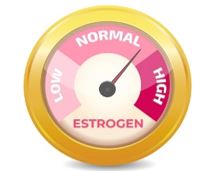Phytoestrogens: Unlocking the Power of Plant Based Estrogens
DOI:
https://doi.org/10.21760/jaims.9.6.25Keywords:
Phytoestrogens, Ayurvedic herbs, phytoestrogen diet, natural estrogensAbstract
Phytoestrogens, naturally occurring plant compounds with estrogen-like activity, have garnered significant attention for their potential health benefits in both males and females. These compounds, found in a variety of foods such as soybeans, flaxseeds, and whole grains, mimic the action of estrogen in the body by binding to estrogen receptors. In females, phytoestrogens have been particularly noted for their role in alleviating menopausal symptoms. They can help reduce hot flashes, night sweats, and vaginal dryness, offering a natural alternative to hormone replacement therapy (HRT). Furthermore, phytoestrogens have been linked to a reduced risk of osteoporosis by promoting bone health and improving bone density, crucial for postmenopausal women. Males also benefit significantly from phytoestrogens. Studies suggest that these compounds can help maintain prostate health and reduce the risk of prostate cancer by inhibiting the growth of cancer cells. Additionally, phytoestrogens have been associated with improved cardiovascular health in both genders. They contribute to lowering cholesterol levels and improving arterial function, thereby reducing the risk of heart disease. Beyond these benefits, phytoestrogens possess potent antioxidant and anti-inflammatory properties, enhancing overall immune function and potentially offering protective effects against certain chronic diseases such as diabetes and obesity. Their ability to modulate hormone levels without significant side effects makes them a promising component of a balanced diet for long-term health maintenance. This study attempts to compile foods high in phytoestrogens and herbs used in Ayurvedic medicine with its super benefits.
Downloads
References
Huether SE, McCance KL (2019). Understanding Pathophysiology. Elsevier Health Sciences. p. 767. ISBN 978-0-32-367281-8.
Delgado BJ, Lopez-Ojeda W (20 December 2021). "Estrogen".StatPearls Publishing. PMID 30855848
Ceccarelli I, Bioletti L, Peparini S, Solomita E, Ricci C, Casini I, Miceli E, Aloisi AM. Estrogens and phytoestrogens in body functions. Neurosci Biobehav Rev. 2022 Jan; 132:648-663. doi: 10.1016/j.neubiorev.2021.12.007. Epub 2021 Dec 7. PMID: 34890602
Estrogen-Wikipedia https://en.wikipedia.org/wiki/Estrogen
Schulster M, Bernie AM, Ramasamy R. The role of estradiol in male reproductive function. Asian J Androl. 2016 May-Jun;18(3):435-40. doi: 10.4103/1008-682X.173932. PMID: 26908066; PMCID: PMC4854098.
Impact of estrogens in males and androgens in females. Stephen R. Hammes, Ellis R. Levin. Published May 1, 2019. J Clin Invest. 2019;129(5):1818-1826. https://doi.org/10.1172/JCI125755.
Lauren Martin. What are the symptoms of high estrogen? Medically reviewed by Avi Varma, MD, MPH, AAHIVS, FAAFP. Updated on January 17, 2024
Yu Z, Jiao Y, Zhao Y, Gu W. Level of Estrogen in Females-The Different Impacts at Different Life Stages. J Pers Med. 2022 Dec 2;12(12):1995. doi: 10.3390/jpm12121995. PMID: 36556216; PMCID: PMC9781566.
Paterni I, Granchi C, Katzenellenbogen JA, Minutolo F. Estrogen receptors alpha (ERα) and beta (ERβ): subtype-selective ligands and clinical potential. Steroids. 2014; 90:13–29. https://doi.org/10.1016/j.steroids.2014.06.012
PMid:24971815 PMCid: PMC4192010.
Desmawati D, Sulastri D. Phytoestrogens and Their Health Effect. Open Access Maced J Med Sci. 2019 Feb 14;7(3):495-499. doi: 10.3889/oamjms.2019.044. PMID: 30834024; PMCID: PMC6390141.
Sirtori CR, Arnoldi A, Johnson SK. Phytoestrogens: end of a tale? Annals of medicine. 2005; 37(6):423–38. https://doi.org/10.1080/07853890510044586 PMid:16203615.
Sirotkin AV, Harrath AH. Phytoestrogens and their effects. European journal of pharmacology. 2014;741: 230–6. https://doi.org/10.1016/j.ejphar.2014.07.057
PMid:25160742
Viggiani MT, Polimeno L, Di Leo A, Barone M. Phytoestrogens: Dietary Intake, Bioavailability, and Protective Mechanisms against Colorectal Neo proliferative Lesions. Nutrients. 2019 Jul 24;11(8):1709. doi: 10.3390/nu11081709. PMID: 31344966; PMCID: PMC6722977.
Cornwell T, Cohick W, Raskin I. Dietary phytoestrogens and health. Phytochemistry. 2004;65(8):995–1016. https://doi.org/10.1016/j.phytochem.2004.03.005 PMid:15110680.
Mazur W. Phytoestrogen content in foods. Baillieres Clin Endocrinol Metab. 1998 Dec;12(4):729-42. doi: 10.1016/s0950-351x(98)80013-x. PMID: 10384822.
Gunter G.C. Kuhnlea,, Caterina Dell’Aquilaa, Sue M. Aspinalla, Shirley A. Runswicka,Annemiek M.C.P. Joosena, Angela A. Mulliganb, Sheila A. Bingham, Phytoestrogen content of fruits and vegetables commonly consumed in the UKbased on LC–MS and13C-labelled standards, march 2009, Elsevier Health Sciences.
Sandhya K. Kamat, Prajakt J. Barde,1 and Sanket B. Raut. Evaluation of the estrogenic activity of Indian medicinal plants in immature rats. Anc Sci Life. 2015 Oct-Dec; 35(2): 90–95. doi: 10.4103/0257-7941.171669
PMCID: PMC4728870PMID: 26865741
Priyanka Kulkarni, Pramod Khobragade. Phytoestrogens Medicinal Herbs - Safe and Effective Alternative to Hormone Replacement Therapy in Menopausal Syndrome. Review Article – Ayurveda. J. res. tradit. med | Sept - Oct 2016| Volume 2 | Issue 5 DOI: 10.21276/jrtm.2016/278
Gauri Swar, Sunita Shailajan, Sasikumar Menon,Activity based evaluation of a traditional Ayurvedic medicinal plant: Saraca asoca (Roxb.) de Wilde flowers as estrogenic agents using ovariectomized rat model,Journal of Ethnopharmacology,Volume 195,2017,Pages 324-333, ISSN 03788741, https://doi.org/10.1016/j.jep.2016.11.038. (https://www.sciencedirect.com/science/article/pii/S037887411632027X)
Amato P, Christophe S, Mellon PL. Estrogenic activity of herbs commonly used as remedies for menopausal symptoms. Menopause. 2002 Mar-Apr;9(2):145-50. doi: 10.1097/00042192-200203000-00010. PMID: 11875334.
Saeed IA, Ali L, Jabeen A, Khasawneh M, Rizvi TA, Ashraf SS. Estrogenic activities of ten medicinal herbs from the Middle East. J Chromatogr Sci. 2013 Jan;51(1):33-9. doi: 10.1093/chromsci/bms101. Epub 2012 Jun 14. PMID: 22700791.















